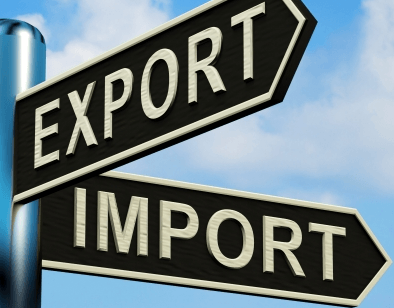Four ways to transform Africa-Caribbean trade
 Exactly one hundred years ago, the Black Star Line ceased sailing. The shipping venture was founded by Marcus Garvey to link Africa with its diaspora in the Americas. It was part of a wider vision of liberating peoples of African descent around the world from slavery and colonial rule. A century after the end of the transatlantic slave trade, Garvey saw how Black economic empowerment through international trade could be a real pathway to freedom.
Exactly one hundred years ago, the Black Star Line ceased sailing. The shipping venture was founded by Marcus Garvey to link Africa with its diaspora in the Americas. It was part of a wider vision of liberating peoples of African descent around the world from slavery and colonial rule. A century after the end of the transatlantic slave trade, Garvey saw how Black economic empowerment through international trade could be a real pathway to freedom.
His vision inspired a generation of African and Caribbean thinkers who dedicated their lives to the independence of their countries and their continent. The black star symbol was adopted by Kwame Nkrumah for Ghana’s flag, guiding continental economic integration towards the founding of the African Union.
A century after Garvey and a half-century after Nkrumah, African and Caribbean leaders will meet this week at the first-ever AfriCaribbean Trade and Investment Forum, organized by the Government of Barbados and the African Export-Import Bank. The Forum comes at a pivotal time, when both regions are battling rising inflation like never before and seeking economic stability and growth, including new trading partners.
The State of Africa-Caribbean Trade
Sadly, on the eve of this historic meeting, Africa-Caribbean trade remains well below its potential.
In 2020, not even 0.1% of African exports were destined for Caribbean markets, while Africa bought less than 1% of Caribbean exports. Trade is heavily concentrated in a small handful of products and countries on both sides. In fact, trade between Africa and the Caribbean is less diversified than their exports to any other region of the world.
But with the right opportunities, analysis and support, this situation can change. Analysis by my staff at the International Trade Centre estimates there is $1 billion of export potential between the two regions, across goods and services.
The figures are startling. In goods trade alone, we found that Africa could boost its exports to the Caribbean by more than 50% in less than five years, potentially exporting $325 million every year. The Caribbean, in turn, could increase its annual goods exports to Africa by almost one-third to reach $264 million. The new market opportunities are spread across several countries and products.
This potential matters. From ITC’s work in more than 130 countries over nearly six decades, we know that South-South trade can be transformative. It can help reverse centuries of colonial-era patterns of trade and end the curse of commodity dependence. It can expand exports into new and innovative areas of comparative advantage.
More trade between developing countries can bring the benefits of trade to micro, small and medium-sized firms, to women-led businesses and young entrepreneurs. It can transform food security, turning businesses large and small into key drivers of initiatives such as CARICOM’s “25 by 2025”, ensuring that the region’s food supply is both sustainable and climate resilient.
Transforming Transatlantic Trade
This potential cannot be unlocked without a serious, targeted push on both sides of the Atlantic. Let me suggest four actions that governments and companies on both sides of the Atlantic can take right now.
First, develop an ecosystem to help African and Caribbean importers, exporters and investors overcome perception gaps and spot market opportunities. Traders often have initial misperceptions about the risks, opportunities, socio-political contexts or the ease of doing business in target markets where they have not operated in before.
Governments, trade/investment promotion organizations and international organizations will need to fill the gap: by providing credible market and trade intelligence, tailored training, matchmaking between buyers and sellers, and even simple translation tools to help overcome language barriers.
Second, organize regular trade fairs and business-to-business meetings to increase contacts between African and Caribbean firms. COVID has been a challenge but not an insurmountable one: virtual fairs can be almost as lucrative for small exporters so long as they have the right support and guidance to turn their business leads into signed deals.
Third, tackle the big challenges and barriers facing Africa-Caribbean trade. Tariffs on some key export items remain high: a free trade agreement between the two regions, building on the African Continental Free Trade Area, could open new markets.
Non-tariff measures, especially regulatory requirements, are prohibitive obstacles to trade. They are even more burdensome for small firms and small markets as the fixed cost of compliance is high. The biggest barrier is transport costs. Reducing transport costs means investing in better port and land freight infrastructure as well as better logistics and customs services.
Fourth, focus on the future of trade. Service sectors like the creative industries, business services and financial services generate not just revenue but also innovative ideas and jobs to keep our young talent working in their home region.
These four actions could transform Africa-Caribbean trade in both directions, at a time when both regions face the “three C’s” – COVID, climate and conflict – and the Sustainable Development Goals are even further from reach.
These actions can take our two regions closer to Marcus Garvey’s pioneering vision. A vision that inspired another Jamaican, decades later, to sing: “Emancipate yourself from mental slavery, none but ourselves can free our minds…”
By Pamela Coke-Hamilton
